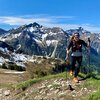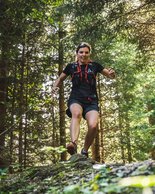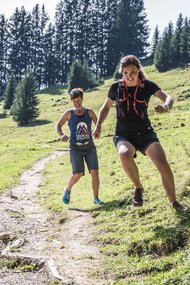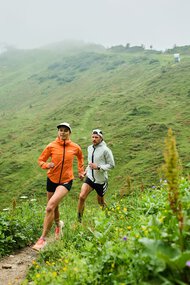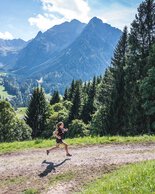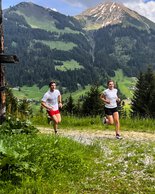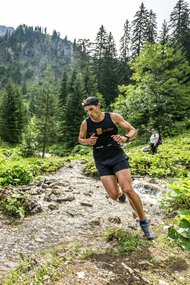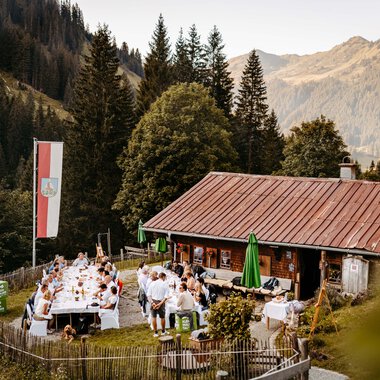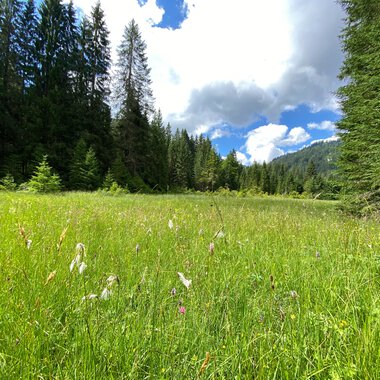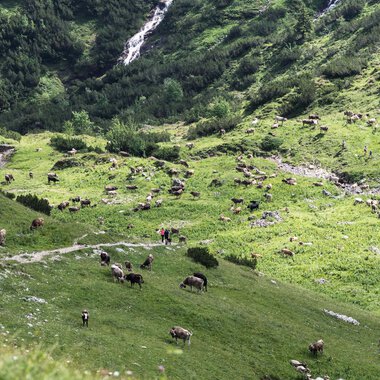Trail running for beginners
07.07.2022
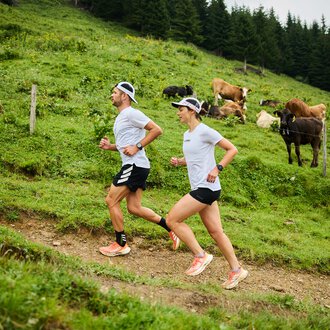
Experience nature. Adapt your run to the conditions. Enjoy the moment and the view. Experience and fun are at the forefront of trail running. Kilometer times are of no interest here. This makes trail running in a smaller style also interesting for beginners.
“Runner” - this term is not protected. You don't have to run a certain number of kilometers or take part in a marathon. Most people start running around the age of one. Nevertheless, you constantly read “sitting is the new smoking” or “lack of exercise - sitting makes you ill”. So the fact is: most of us definitely don't walk enough. For many, this is the reason to get back into their running shoes and try to start a running career. What often happens? Motivation quickly falls by the wayside or the body tweaks and twitches and you give it up again. “I'm just not a runner,” you hear. But that brings us back to the point: humans ARE born runners. Our entire biomechanics are designed for running. How else would our ancestors have been able to cover tens of kilometers on foot?
We have forgotten how to walk
The problem: we have forgotten how to walk. People in the western world spend most of their day sitting down. And when we are not sitting, we are standing in a posture that is as back-damaging as possible. The musculoskeletal system with its muscles and tendons is simply no longer used to walking, let alone running, for long periods of time. Therefore: start slowly! Get the body used to the movement step by step. And this is where trail running comes into play. Instead of mindlessly doing the same lap around the house every day, challenging your body on tar, simply unpack your inner child and jump through puddles and over roots.
Advantages for trail running beginners
Running on unpaved paths - at first glance, this seems very challenging and more suitable for advanced runners and professionals. However, if you take a closer look, trail running is ideal for beginners. At second glance, it may even be significantly better than running laps on hard surfaces in the city.
To turn your first attempts at running into a habit or a new favorite hobby, you need a bit of stamina. Trail running allows you to discover new things, great views and combine it with a trip into nature. You can explore a new world around every bend. Definitely good for motivation. Another point is the speed. Whether you run or walk is irrelevant when trail running. It is often better to walk. Alternating between running and walking is ideal, especially for beginners.
Stumbling blocks at the beginning
And now? Just start running? Head straight for the mountains and off you go? The pictures of narrow paths and technical downhills look tempting. But it's not quite that easy. As with any new sport, you need to practise first. Otherwise you'll quickly fall flat on your face. In the truest sense of the word. Because: the demands on coordination, balance and technique as well as on muscles, ligaments and tendons are significantly higher when running off-road than when running on the road. It is therefore advisable to start slowly. If you try to do too much too fast, you will exceed your limits and, in the worst case, overload and injure yourself.
It is best to train early and regularly on uneven terrain without climbing mountains straight away. A lot of altitude, steep terrain, expensive equipment, optimizing your technique - it all takes time and (perhaps) comes much later. Trail running on a smaller scale definitely has its appeal for body and mind and the Kleinwalsertal with its trails, even at medium altitudes, is the ideal playground for this.
TIPS FROM TRAIL RUNNING PRO DANIEL JOCHUM
Daniel was born and raised in Kleinwalsertal and is one of the most successful active trail runners in the valley. His tips for preparing for trail running:
- Approach it slowly! This works best on gentle terrain. In addition to coordination skills, this also allows the muscles to build up slowly so that they can cushion and absorb when running. “If you go too fast, the risk of injury is very high”. This can be supported by appropriate strength training.
- Slow down the speed. Most exercisers move in so-called “gray zones”. The speed is too high for the basics, but the fast units can no longer be performed at maximum speed. In the long term, no progress is made and the risk of injury increases. You can deliberately train slowly. This promotes fat metabolism and makes running more economical. You will enjoy running for longer! Use your breathing as a control: if you can still speak well or breathe through your nose, you are in the right zone! You are not forbidden to do some banging (brisk running, interval training), but this should be limited to approx. 20% of your overall training!
- Walking is expressly permitted. Do not grit your teeth on uphill sections. In steep terrain, do not constantly try to maintain your running stride. From a certain gradient upwards, it is more economical to walk, as the change in biomechanics means you are just as fast (sometimes faster) with a large walking stride and save energy at the same time. This also trains other parts of the musculature and brings variety to the movement. This can also prevent fatigue or cramps.
- Train your technique on easy terrain. Try running downhill on the forefoot. For stability and to prevent injuries. And uphill? Take small steps and lean your upper body slightly forward. Don't forget to breathe!
Easy practice trail circuit for beginners
The Bärgunt trail in Baad. Here, beginners will find the perfect conditions for getting into trail running on just under five kilometers. Without any asphalt. A gentle ascent with a few short, steeper sections. Slightly undulating downhill sections and a narrow trail - ideal for practising downhills. Have fun!
